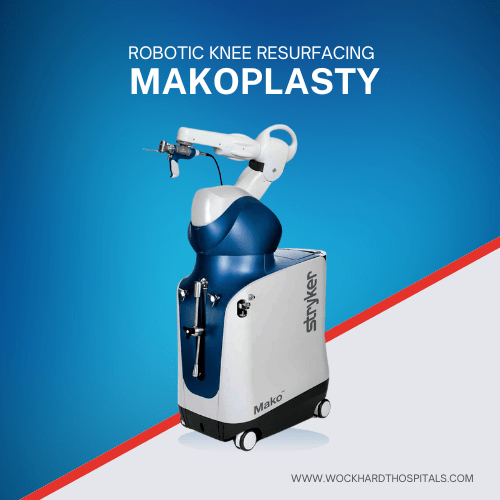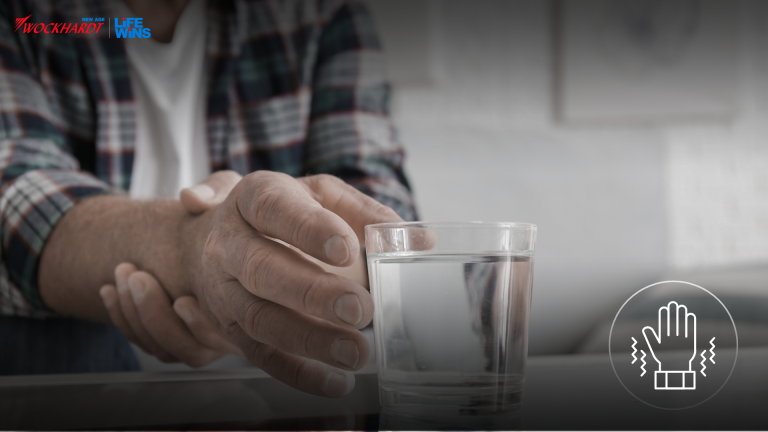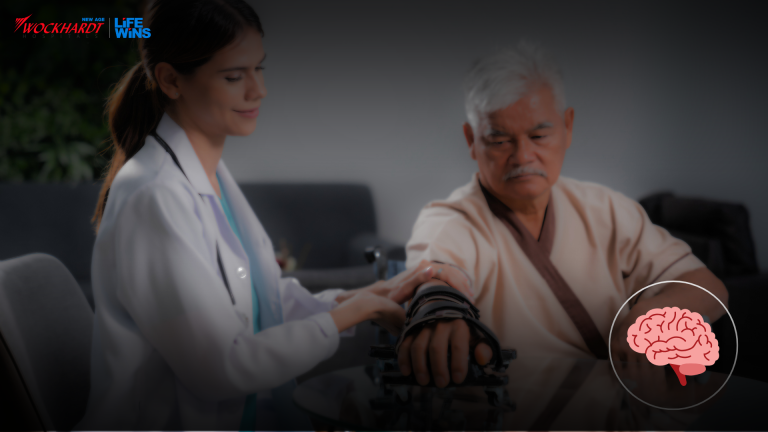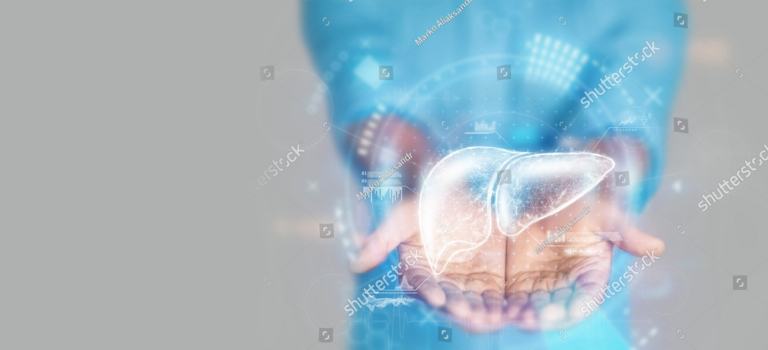World Alzheimer’s Day: 21 September, 2024
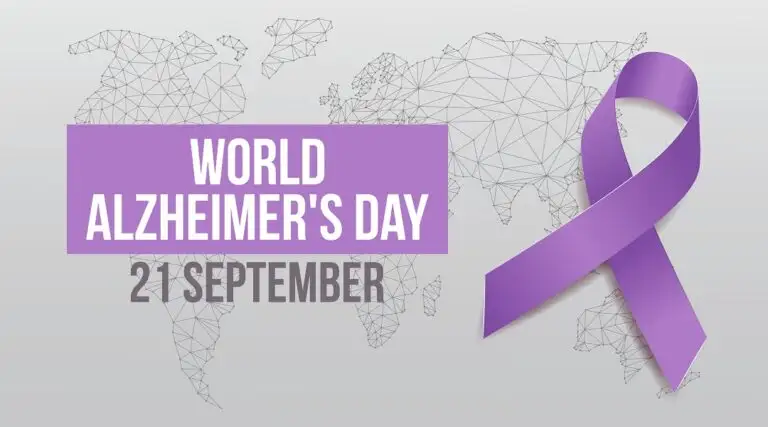
Memories accumulated during our lifetime are meant to be cherished, not taken away by Alzheimer’s disease. Remember the film of Anthiny Hopkins ‘Father’, where he absorbs you in the mind of a person with Alzheimer’s disease. The film deals with the issue of Dementia. Memories are an integral part of everyone’s lives. Think about a situation where a person begins to forget those cherished memories and in time even the basic functions of life. This is what happens in Alzheimer’s disease (AD). We need a network between nerve cells for proper relay and storage of information. Generally, with age, body functions begin to deteriorate and certain proteins tend to accumulate in the brain, which interfere with the connections and disrupt the transmission of information. Due to this, the affected person may not be able to form a link between what he/she sees, hears, feels and what the subsequent action should be. Such changes of AD begin to occur in people around the age of 40-50 years. With each passing year, the symptoms become evident—beginning with forgetfulness and progressing to loss of understanding of even the most basic activities (how to brush teeth, how to lift a spoon and put it into the mouth, etc.). Alzheimer’s disease tends to occur in those people who are over the age of 65. The risk of Alzheimer’s disease and other types of dementia increases with age, affecting an estimated 1 in 14 people over the age of 65 and 1 in every 6 people over the age of 80. But around 1 in every 20 people with Alzheimer’s disease are under the age of 65. This is called early- or young-onset Alzheimer’s disease. Dr Praveen Gupta, explains the difference between dementia and Alzheimer’s saying that dementia refers broadly to mental and neurological decline. Alzheimer’s is a cause of dementia. It is a specific disease with specific symptoms whereas dementia is a lot broader. Dementia can also occur at any age – it happens when the brain cells have been affected and can no longer perform. Alzheimer’s is mostly age related – a progressive degenerative brain disease. It tends to affect a person’s ability to learn new things as the cells which help people retain information are damaged first. Yet neither are considered to be part of the normal aging process. Dementia can also include Parkinson’s or Huntington disease. Dr Gupta recalls an incident when he had a patient who was repeating things, forgetting if he had eaten food, had started wandering – leave his house without telling anyone. He was violent and had started mis-behaving with his own family and was hitting the attendant too. The plight of such individuals is pitiful. Who was once the life of the party barely recognizing his/her family today? A person who was once known for his active, independent ways is now dependent on someone even to comb hair or wear clothes! What is unfortunate is that the symptoms of AD may not be evident at early stages. More commonly, people don’t consider forgetfulness as a possible medical condition. Thus, the diagnosis of AD at an early stage is missed. With advancing disease, dementia sets in, which is a collection of symptoms related to memory, thinking, and behavioural issues. AD is the most common cause of dementia. Alzheimer’s disease is a commonly occurring progressive neurologic disorder wherein one’s brain shrinks and the brain cells tend to die. Dr Pavan Pai, Neurologist, Wockhardt Hospitals says, “If you suffer from Alzheimer’s then there will be impaired memory and thinking and you will not be able to recollect anything or any situation. This will make it difficult for you to remember simple tasks like when you ate food, where you kept the keys or wallet, where you stay, password, medical condition, your family members name or you won’t even be able to recognize them. Thus, you will be unable to perform your real-world activities with ease. Alzheimer’s will not only take a toll on your physical but as well mental and emotional well-being. You may become stressed, anxious, frustrated, depressed, nervous, and irritated as it will steal your peace of mind. With passing time, one may be completely robbed of his/her memory.” Sadly, what exactly triggers this disease remains unknown. Dr Pradeep Mahajan, says, “Genetic mutations, obesity, other neurological conditions, trauma, lifestyle habits, and many more could cause AD. Therefore, it is difficult to prevent or even predict who or when a person will acquire AD.” Women tend to be affected by the disease more than men. Dr Mahajan says, “The reason for this is not clearly known but there is some molecular basis (decreased mitochondria-related protective effects) that makes older women more vulnerable. There are other factors in women such as longevity (women tend to live longer than men, hence increased possibility of accumulation of toxic substances), depression, higher emotional burden, hormonal variations, certain genetic variations, etc., which increases their risk of developing AD. Subsequently, the mental and physical decline in women with AD is also more rapid than in men.” There are no ‘medicines’ as such to prevent the disease and its progression. Dr Mahajan explains, “The need of the hour is novel therapies that can at least prevent further progression of the condition. This is where molecular chaperones and exosomes may be helpful. A part of Regenerative Medicine, these therapies aim to boost natural healing mechanisms in the body. Molecular chaperones are like the quality analysts of proteins. Like a monitor in a classroom, they regulate the activity of proteins in the body and are capable of destroying ‘misbehaving’ proteins. In AD, these chaperones prevent the unwanted proteins from clumping together in the brain. Therefore, they can be used to protect patients from further memory and other deficits. The best part, these are naturally occurring molecules in the body, hence the immune system will not consider them foreign, and there are no associated side effects.” Dr Mahajan explains, “While reversing AD is not currently possible, advances in diagnostics
Expert lists 5 ways to know that your headache is signalling something serious
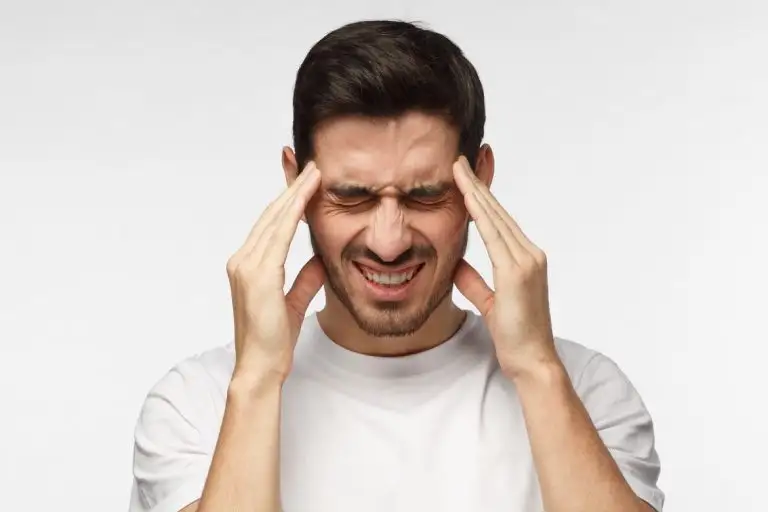
Headache since morning? Have a cup of chai or coffee. This is not working? Sleep for a while and bang the headache is gone. Every Indian would relate to this headache remedy that we have been following for years. Painkiller for a headache is the last option that many of us resort to. While most of the time, these headaches are simple and occur because of exhaustion, stress and anxiety, and can go by having a rest or a hot relaxing drink, there are times when your headache might be signalling something serious. Dr Pavan Pai, Neurologist, Wockhardt Hospitals, Mira Road, Mumbai, lists five ways to know that your headache is a red flag of something serious, and shouldn’t be ignored. 1. Headache with nausea, vomiting, and sensitivity to light and sound These symptoms may indicate a migraine headache, which is a neurological condition that leads to a throbbing sensation on just one side of the head. So, if you have a headache with nausea, vomiting, and sensitivity to light and sound, then you need to immediately consult a doctor for a migraine treatment. 2. Headache accompanied by fever or stiff neck This can indicate that you may have encephalitis or meningitis. Encephalitis means brain inflammation and meningitis means inflammation of the membrane around the brain. Both the conditions can be life-threatening and cause headaches. It is advisable that you don’t ignore these symptoms for long and consult a doctor at the earliest. 3. Headache with speech and vision changes If your headache is accompanied by vision changes, troubled speech, inability to walk, weakness on one side of the body then it can be an ischemic stroke. It is the most common occurrence and usually is seen owing to the blood clot that happens in a blood vessel in the brain and the blood flow is cut-off to the brain. Did you know? A severe headache is a sign of a stroke. 4. Headache causing behaviour changes Is your headache accompanied by other behavioural changes like memory, reasoning, reading, and writing, or emotional control? Then, it can be a brain tumor. Thus, it is imperative to speak to the doctor and get a proper diagnosis done. 5. Headache due to ruptured brain aneurysm A brain aneurysm means a weak spot in the brain’s arterial wall that bulges and gets filled with blood. Thus, a sudden, severe headache is the key symptom of a ruptured aneurysm. It tends to leak and rupture, leading to bleeding in the brain (subarachnoid haemorrhage).
What Do Medical Experts from Mumbai Say on ‘Long-Covid’ Definition Given by WHO?
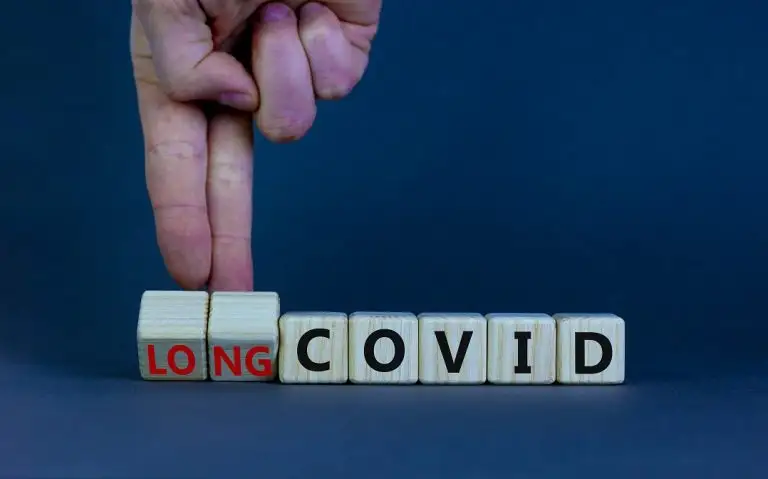
About 5% of Covid-19 patients suffer from the severe form of infection requiring a longer hospital stay, oxygen support and ICU admissions. The World Health Organization (WHO) last week defined ‘post-Covid’ or what is commonly known as ‘long-Covid’, a term used for Covid-19 patients who suffer from prolonged after-effects of the infection. The health agency used Delphi methodology – a structured exercise to arrive at a group opinion or decision by surveying a panel of experts. Five groups of stakeholders, including patients, patient-researchers, external experts, WHO staff and others were involved in formulating the definition. What Does the Definition State? The WHO definition of long-Covid states: “Post-Covid-19 condition occurs in individuals with a history of probable or confirmed SARS CoV-2 (the virus that causes Covid-19) infection, usually three months from the onset of Covid-19 with symptoms and that last for at least two months and can’t be explained by an alternative diagnosis. Common symptoms include fatigue, shortness of breath, cognitive dysfunction but also others and generally have an impact on everyday functioning. Symptoms may be new: onset following initial recovery from an acute Covid-19 episode or persist from the initial illness. Symptoms may also fluctuate or relapse over time.” It has also clarified that a separate definition may be applicable for children. Was Such Categorisation Important? The absence of both a single terminology and a clinical case definition have been repeatedly signalled as drawbacks to advance on research and management of these patients, according to WHO. Experts say categorisation is also important for patients to accept their condition. “When there is a certain categorisation, patients learn to group themselves and come forward to seek help,” said Dr Nitin Karnik, head of medicine at the civic-run Lokmanya Tilak Municipal General Hospital in Sion. “In the absence of categorisation, patients often get lost in follow-ups. Starting of post-Covid out-patient departments (OPDs) has, therefore, been a crucial step taken by most hospitals, where patients with lingering issues can seek help,” he said. Critical care specialist Dr Kedar Toraskar from Wockhardt Hospital said that the definition is helpful, but doctors should not haphazardly label symptoms as post-Covid. “Patients may have health issues due to some underlying conditions that may not be Covid-related. Thus, a thorough diagnosis is a must before labelling the symptoms as post-Covid,” he said. Commonly, effects lingering on for more than eight weeks were identified as post-Covid by doctors. Some patients, who suffered from the after effect beyond three to six months, were identified as long-haulers. What is the Estimated Number of Long-Covid? Estimates on long-Covid vary a lot. About 5% of Covid-19 patients suffer from the severe form of infection requiring a longer hospital stay, oxygen support and intensive care unit (ICU) admissions. Patients who have moderate to severe forms of infection are more likely to have residual health issues say doctors. However, some patients with mild Covid-19 have long term lingering after-effects too. “Conservatively, I would say about 10 % patients have long-Covid, requiring follow-ups for physical and mental rehabilitation,” said Dr Toraskar, who is also a member of the Covid-19 task force of Maharashtra. While fatigue, myalgia (muscle pain), hair loss, body ache, poor appetite, muscle wastage are some of the common long-term impacts, patients also have frequent episodes of low-grade fever and effort intolerance wherein minutest efforts to walk from one room to another are not tolerated by the body. “When patients suddenly find themselves struggling to do their daily chores, they panic,” said Dr Karnik. “They need a lot of reassurance that their body will recover gradually with good diet and physiotherapy. The worst impacted are families where all members got Covid-19 and all the adults developed long-Covid. In such cases, we have seen patients struggling as there are no caregivers,” he said. Dr Karnik estimates that nearly 30% of patients suffer from long-Covid. “The long-term sequelae clear out in most patients gradually,” he said. A study published in the medical journal JAMA Network Open on Wednesday has estimated that more than half of the patients diagnosed with Covid-19 globally will experience post-Covid or long-Covid symptoms, up to six months after recovering. The study was carried out by researchers from the Penn State College of Medicine. The team conducted a systematic review of 57 reports that included data from 250,351 unvaccinated adults and children who were diagnosed with Covid-19 from December 2019 through March this year. The researchers identified many long-term health issues involving general well-being, mobility, neurological conditions, mental health disorders, lung abnormalities, cardiovascular issues, skin conditions and digestive issues among the survivors. “Our results indicate that clinical management of persistent post-acute sequelae of Covid-19 (PASC) will require a whole-patient perspective, including management tools like virtual rehabilitation platforms and chronic care for post-acute Covid-19 symptoms in conjunction with the management of pre-existing or new comorbidities,” the researchers stated in the study, further recommending one-stop multidisciplinary clinics to avoid multiple referrals to different specialists and encourage comprehensive care. Source: https://www.hindustantimes.com/cities/mumbai-news/what-do-medical-experts-from-mumbai-say-on-long-covid-definition-given-by-who-101634234872062.html
Difference Between Male & Female Breast Cancer

BREAST cancer refers to a state wherein some cells start to grow and multiply abnormally. These cells grow at a faster pace as opposed to the healthy cells and then start to affect other body parts. Being the second most common form of cancer in women after skin cancer, the good news about breast cancer is that it’s recovery and survival rates have improved remarkably in the past few years owing to timely detection and treatment. While there are a number of myths that surround breast cancer treatment, symptoms and diagnosis, the most popular one is that this condition only affects women. Turns out, breast cancer can affect men as well. Although a rare occurrence in men, it is important to watch out for the signs and symptoms of this condition in both men and women. This Breast Cancer Awareness Month, we connect with experts to learn more about the difference between breast cancer in men and women. Dr Kanchan Kaur, spoke about the symptoms of breast cancer in women and explained how painless lumps often get missed as a major tell-tale sign. She went on to define how it is not very different from breast cancer in men, however, the occurrence is so rare that people often ignore the possibility as well. “The one biggest myth that we face as clinicians is when some patients may feel a lump, however, since it is painless, they think it is not related to cancer. People must understand that any change in the breast, such as nipple discharge, change in shape or size of the breast, redness on the surface that fails to get treated with a routine course of antibiotics given by the physician must always be checked by an oncologist.” “Another myth that we, as oncologists, come across, is how breast cancer is a disease of women even though it has been proven that men can get breast cancer. If we see 100 cases of breast cancer, 99 may be women but one can be a man. The symptoms of breast cancer in men are similar to those in women. The most common being a lump in the breast (which is often painless). The sad side of the story is that since there is such low awareness around breast cancer in men, they are more likely to get diagnosed at a much later stage since no one suspects breast cancer in them,” she added. Dr Garvit Chitkara, explained what breast cancer is and shed light on the statistics in India and survival rate of patients. As explained by Dr Chitkara, following are the common symptoms and signs of breast cancer: Painless lump in the breast or armpit, change in breast shape, dimpling in the breast skin, abnormal nipple discharge and nipple retraction or ulceration. Dr Rohan Khandelwal, spoke about breast cancer in men and explained where and how the same starts forming. “The common misconception about gynecomastia (male breast cancer) is the thinking that since men do not have breasts, they can’t get breast cancer. However, in truth, we all have breast tissues. Usually, men have broader chests (bigger than normal) due to fat, but sometimes men can also develop breast gland tissues. Breast cancer can generate in any area of the breast. In men, it’s generally found near the nipple. Breast cancer can develop anywhere from breast bone to the armpit or even the collarbone region. Early detection, timely examination, healthy life management can improve the prospect of survival in breast cancer patients,” he said. Dr Meghal Sanghvi, Consultant Surgical Oncologist at Wockhardt Hospital (India) described the symptoms of breast cancer in men, the risk factors involved and also shared some tips for women with respect to breast cancer management. “Breast cancer in men is rare — only one percent of cases occur in men. However, its signs remain the same for both sexes — for instance painless breast lump, blood discharge from nipple, axillary lump or swelling, breast eczema and skin redness or any ulcer over the breast or on the nipple. The risk factors for men and women include genes and family history of breast cancer and radiotherapy. For women, history of ovarian cancer in the family, early menses, late menopause and long term continuous hormonal therapy could add to the risk of getting breast cancer. Obesity, alcoholism and smoking are also major risk factors. “Immediate precautions for women can be regular self-breast examination after the age of 30, annual mammographies above 40 and clinical breast examination once a year by a qualified breast surgeon. For men, screening is not recommended. And factors which reduce the risk of getting breast cancer are breast feeding your child for six months, eating a balanced diet, maintaining an ideal body weight, and avoiding drinking and smoking,” Dr Sanghvi concluded. Source: https://www.timesnownews.com/health/article/breast-cancer-awareness-month-breast-cancer-in-men-and-women-mammograms-cancer-cancer-in-women/821003
Can you consume eggs and paneer at the same time?

Egg and paneer are popular and good sources of high quality protein. But is it healthy to consume them together in the same meal, especially when you are trying to lose weight?! The golden dietary rule to shed kilos is to follow a diet that is less in calories and high in protein. Foods with a combination of low calorie and high protein can simply do wonders for weight loss. I can hear you guessing some names of foods which serve the same purpose. Most of us rely on paneer and eggs for our daily protein intake for weight loss. Both egg and paneer are great sources of protein, which plays a crucial role in weight loss as it takes very long to digest, inducing the feeling of satiety. Not just that, it increases the levels of appetite-reducing hormones, making you crave less, thereby aiding weight loss. People who are trying to lose weight already have these foods in their diet and usually consume them on daily or different days. In fact, there are some people who consume both egg and paneer to double the intake of protein. Even if you’re some of them or not, have you ever wondered if eating them together delivers any benefits or not? Well, we are going to answer this for you. Before that let’s understand how eggs and paneer separately help in weight loss. Here’s how paneer or cottage cheese could help in the weight loss process: Paneer is love for people. It provides instant energy to the body and aids in various bodily functions. When HealthShots spoke to Amreen Shaikh, head dietician and nutritionist at Wockhardt Hospital, Mumbai, she said, “As a source of protein, paneer has to be a part of your daily diet. But make sure you eat healthy dishes such as scrambled paneer, paneer tikka, or any form of pan-fried paneer instead of paneer butter masala or shahi paneer if your aim is to lose weight or gain muscle mass.” “You can consume paneer in small portions throughout the day without having to worry about gaining weight. Its low level of lactose makes it bearable for some lactose-intolerant people as well, even though not all of them,” she added. Remember ladies, Paneer offers a range of health benefits only when consumed in moderation. Here’s how eggs could help in the weight loss process: Sunday ho ya monday roz khao ande, but many of us worry what if it causes weight gain. Vidhi Chawla, told HealthShots that despite such concerns, it’s difficult to deny that eggs are one of the most delicious ways to provide your body with much needed nutrition and health. So she explained how eggs are beneficial for weight loss. Here they are: 1. One way to lose weight is to increase your metabolism rate, which will help you burn calories for energy and help you with faster weight loss. That’s because eggs are high in protein, and protein is known to increase metabolism rates. 2. Eggs are nutrient-dense and filling, making them an excellent diet food. In addition, eggs have a high satiety index, which suggests they may help you feel fuller for longer. 3. Eggs contain a good balance of all of the essential amino acids that your body requires. This means that your body can easily utilise the protein in eggs for maintenance and metabolism. So is it healthier to have eggs and paneer in the same meal? If you’re someone trying to lose weight or build muscle, you would probably know the importance of adding protein rich foods to your diet. So to understand if it’s okay to consume egg and paneer together or not, we reached out to Shabana Parveen. According to the expert, there is no harm in having paneer and eggs together. Both are packed with protein, calcium, vitamin B12, and iron. For vegetarians, paneer is the major source of protein, but non-vegetarians can have both. Being rich in protein, both are good options for weight loss. It reduces your appetite, helps in burning your belly fat. Both get digested by your body slowly and that makes you feel fuller for longer.” So it’s up to your body’s needs and choices. Overall, you can either consume egg at one time and paneer at another, vice versa or you can have both at the same time but in moderation as the excess of everything can backfire. Source: https://www.healthshots.com/healthy-eating/nutrition/weight-loss-is-it-safe-to-eat-eggs-and-paneer-at-the-same-time/
Experts Warn about ‘Covid Toes’
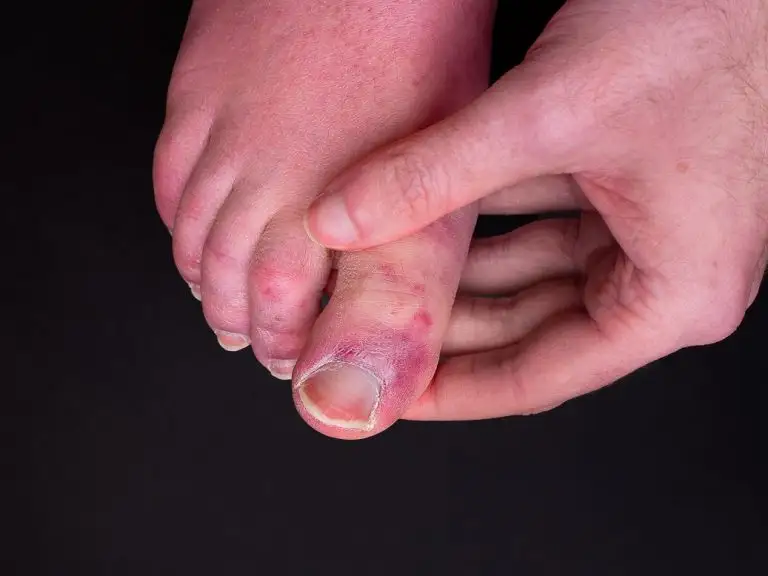
It is now known that Covid-19 survivors have to go through short and long-term complications, both psychological and physical. A recent study published in the British Journal of Dermatology has raised concerns about a condition called ‘Covid toes’ which causes inflammation in the toes and, if untreated, causes an autoimmune disorder. Dr Wiqar Shaikh, says the Covid-19 virus is a peculiar one. It has led to some unusual symptoms and manifestations such as loss of taste and smell, myocarditis (swelling of the heart muscles), kidney failure, anxiety and depression, long Covid, in which symptoms could remain for up to six months after the infection, etc. “A a rather unusual presentation of Covid-19 is Covid toes which results in chilblain-like swellings and redness of the hands and toes. A chilblain is a condition which occurs in response to repeated exposure to cold and results in inflammation (swelling) of small blood vessels in the skin leading to skin sores or bumps on the fingers and toes.” Dr Shaikh said Covid toes have been reported from several countries in the world including Europe and North America. He quoted a study from Paris, published in the British Journal of Dermatology on October 4, in which 50 patients were studied. He said the study revealed high levels of what are called autoantibodies, antibodies produced by the body’s defence or immune system which attack the body and destroy it. Dr Shaikh said the study revealed an increase in Type 1 interferon, a key protein in the anti-viral response of the human body, which in the case of Covid infection triggers a massive response of the immune system resulting in production of IgA type of antibodies. This was found in 73% of the patients studied. This results in production of ANCA (antinuclear cellular antibodies) which lead in turn to swelling of the blood vessels of the patient, a condition called vasculitis. The entire immunological procedure is what is called an autoimmune response, in which the immune system destroys one’s body. Dr Shaikh added that there are several autoimmune diseases known to mankind, including the dreaded Systemic Lupus Erythematosus (SLE). “We could be looking at the beginning of a wave of autoimmune diseases in patients who have had Covid-19. An ominous thought and possibility,” he said. “The symptoms of chilblain-like inflammation and redness on the hands and feet, develops within 1-4 weeks of being infected and can result in swelling and hematomas on toes, and fingers also become swollen and red. Many people who have got Covid vaccines have also seen occurrence of similar conditions within 1-4 weeks of the vaccine shots, and this is attributed to autoimmune reactions caused by circulating viral antigens. This condition is self-resolving in most patients, although more widespread coagulation in vital organs will require urgent treatment with steroids”, said Dr Subhash Hira. “We have to study all post-Covid patients closely to rule out possibilities of other autoimmune diseases like SLE. Autoimmune diseases are chronic diseases and we need to educate all doctors to screen post-Covid patients for them. Also, when we see any new patient of autoimmune disease, we must ask about past history of Covid infection,” said Dr Santosh Bansode, Head of the Department, Emergency Medicine, Wockhardt hospital. “We should educate people about these new findings so that they can take maximum precautions. Also, patients who already suffered from Covid should observe themselves for any abnormal symptoms and consult a doctor immediately,” Dr Bansode concluded. “What causes this is unknown. There is no specific treatment besides topical steroid creams which itself is debatable. Therefore, it is advisable that if any such lesions develop immediate dermatologist or physician consultation is necessary,” said Dr Ketan Vagholkar. Source: https://www.mid-day.com/mumbai/mumbai-news/article/experts-now-warn-about-covid-toes-23196099
Navratri and Fasting- A guide book on dos and don’ts

The auspicious festival of Navratri has started. Rich in colours, tradition, songs and dance, Navratri is also a time for us to relax, turn inwards and recharge ourselves with energy. Devotees dedicate these 9 days to worshipping the 9 different forms of Goddess Shakti. Fasting is an integral part of this auspicious occasion. Everyone has their own reasons for fasting. Though most of the people fast for religious reasons, many people fast during this time of the year to detoxify their bodies and cut back on unwanted calories. Which is a brilliant idea. But the thing is that converting a Navratri feast into a detox diet takes a lot of effort. You can’t say “ I’m fasting and nosh on aloo sabzi and puri. Often, in the garb of fasting, we gorge on delicacies loaded with oil, salt, fats and carbs, and then we regret later when we put on oodles of weight, despite fasting for 9 days. The Navratri fast is said to be important because, at this time of the year, when the season changes, the body needs to get rid of toxins in order to increase the immunity levels. But fasting should be done in a manner you get the maximum physical and spiritual benefits. You can lose weight and detox to this Navratri. Not just that, but you will also feel elated and fresh after 9 days. But how can you achieve this? Chief Dietician Swati Awasthi at Wockhardt Hospitals, Nagpur, shares a complete guide on how to fast during Navratri in a way that is conducive to your mind and body. HEALTHY FASTING TIPS – AVOID STARVING – while some people binge on snacks and fruits even when they are fasting, there are many people who eat nothing at all. The thumb rule is to avoid fasting for too long. If you want to detoxify, eat fresh fruits or nuts at intervals. Prolonged fasting can lead to a number of problems such as weakness, anaemia, fatigue and headaches. STAY HYDRATED – Staying hydrated when you fast is extremely important. Water, low-fat milk, fruit juices, coconut water are some ways to stay hydrated and maintains an adequate level of fluids and salt in the body. DON’T OVER INDULGE ON FRIED SNACKS – Fasting for many people includes binging on oily snacks throughout the day. By doing this, you are doing more harm than doing good to your body. Fried snacks are high in fats as well as salt, depending too much on these snacks negate your purpose of fasting. MAINTAIN YOUR ENERGY LEVELS – Feeling low and experiencing a lack of energy is quite common during Navratri. To maintain your energy levels, you need to eat right. Include foods that are rich in proteins and carbs to maintain your energy levels. EAT FOODS RICH IN FIBRE – Include vegetables such as sweet potato, raw banana, bottle gourd and pumpkin in your menu to stay full and satiate your hunger. The reason is fibres take a long time to digest, thereby keeping you full for a longer period of time and also curb your hunger. GET A BREAK FROM SUGAR – we tend to eat extra sugar during fasting. Refined sugars don’t have any nutritive value and are stored as empty calories. Instead of refined sugars, try to use jaggery and honey to satisfy your cravings for sugar. PLAN YOUR MEALS – A sudden change in your diet can have an impact on your body and mind, which makes it important to plan your meals. Ensure that you eat a major meal before sunset with alternate grains and minimum oil. Planning your meals and snacking healthy will maintain your energy levels and keep you healthy. Source: https://thelivenagpur.com/2021/10/04/navratri-and-fasting-a-guide-book-on-dos-and-donts/
Beware! Eating too much paneer can leave you gassy

Paneer or cottage cheese is a healthy food, but all good things are good in a limit. Consuming an excessive amount of paneer can be bad for you! We’ve always been familiar with the good side of paneer, and how its daily consumption can improve one’s health. Well, given how awesome paneer tastes and how nutritious it is, we aren’t really surprised. The fact that it is versatile and delicious, makes it a food that is relished by vegetarians and non-vegetarian alike. But an overkill can do more harm than good. We’re here to tell you why eating too much paneer is bad for you! First, let’s find out a little more about its nutrient composition. Nutritional profile per 100 gms: Paneer is love for every vegetarian. What’s more, paneer provides instant energy to the body and aids in various bodily functions. Moreover, it is rich in selenium and potassium which can work wonders for your mental as well as physical health. When HealthShots spoke to Amreen Shaikh, head dietician and nutritionist at Wockhardt Hospital, Mumbai, she said, “As a source of protein, paneer has to be a part of your daily diet. But that doesn’t mean you consume it in any form. Make sure you try to eat healthy dishes such as scrambled paneer, paneer tikka, or any form of pan-fried paneer instead of paneer butter masala or shahi paneer if your aim is to lose weight or gain muscle mass.” “You can consume paneer in small portions throughout the day without having to worry about gaining weight. Its low level of lactose makes it bearable for some lactose-intolerant people as well, even though not all of them,” added. But remember ladies, Paneer offers a range of health benefits only when consumed in moderation. Eating too much of anything is always riskier for health. The same goes with paneer. “As protein stays for a longer time in the stomach, eating too much protein can cause abdominal fullness, nausea, pain in the abdomen, and cramps,” says Dr. Vikas Singla. Raw paneer can be problematic Paneer is light on the stomach and easy to digest. However, uncooked paneer or a large amount of it can cause bloating and indigestion problems. According to Ayurveda, uncooked paneer is heavy to digest and thus takes time to digest completely. On the other hand, when paneer is cooked with spices like turmeric, ginger, and cardamom it becomes easy to digest. Control your paneer cravings, and eat it right! Source: https://www.healthshots.com/healthy-eating/nutrition/side-effects-of-eating-too-much-paneer/
What you Didn’t Know About Retinol

The ‘R’ word has taken the skincare world by storm and everyone today has become an avid user of retinoid, an umbrella term used for all derivatives of Vitamin A, like retinol. Even a few drops of retinol serum can have a transformative effect on one’s skin by improving its texture and reducing pigmentation, to give a vibrant glow. However, there is a lot of misinformation about the ingredient and its usage. We have debunked five myths. BUSTED: Most people are under the assumption that retinol or retinoids are too abrasive for the tender area around the eye. “The periorbital skin is most prone to lines and wrinkles. Retinol can help in smoothening and eliminating fine lines. However, it would be wise to use it in moderation,” says Dr Shraddha Deshpande, Consultant Aesthetic Surgeon, and Cosmetologist, Wockhardt hospitals. BUSTED: To clear this misconception, Dr Kiran Sethi says, “Retinol can be applied for years and it will improve signs of aging while preventing fine lines, enlarged pores, and even acne.” However, it is imperative to remember that the skin can change over time. If one’s skin is getting dry due to aging, one can always reduce the frequency and strength of retinol. BUSTED: We usually assume that a stronger formula will always give better results. However, that is not the case with retinol as jumping to a stronger formula can cause more side effects. “There are studies to support a higher percentage with somewhat better outcomes but it’s always prudent to start with lower concentrations (particularly for sensitive skin) or with retinol and hyaluronic acid formulations and then increase the strength over time,” says Dr Rajat Kandhari. BUSTED: On the contrary, it stimulates the synthesis of collagen and elastin in the skin. The supposed skin thinning is likely to be due to irritation associated with taking a retinoid that is too robust for one’s skin or using it too frequently. “They increase cell turnover and promote dermal collagen remodelling, which improves skin elasticity and firmness,” says Dr. Vandana Punjabi. BUSTED: Retinol is a Vitamin A derivative and it works on a profound cellular level by permeating deep into the skin and stimulating collagen formation. It is easy to assume that it is exfoliating because of the peeling and redness. Dr Vandana Punjabi says, “The peeling effect seen is due to the dryness and irritation of the skin.” Source: https://www.hindustantimes.com/lifestyle/fashion/heres-what-you-didn-t-know-about-retinol-101632909680953.html
Heart Failure Clinic in Nagpur
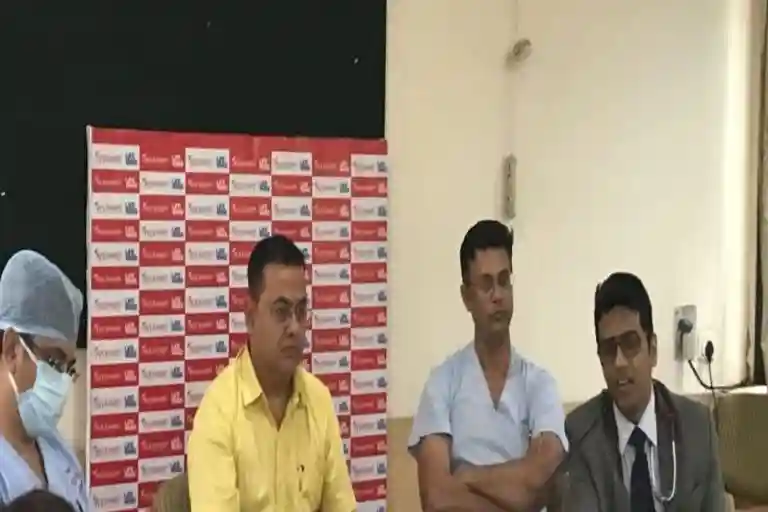
Nagpur: ‘World Heart Day’ is celebrated in the month of September every year. This year, Wockhardt Hospitals, Nagpur is launching a dedicated “Heart Failure Clinic- Dil Dhadakne Do” for the patients suffering from heart failure. The clinic was launched in presence of the expert and highly skilled cardiac team of Wockhardt Hospitals, Nagpur. The team comprises of Dr. Nitin Tiwari, Sr. Consultant- Cardiology, Dr. Achyut Khandekar, Sr. Consultant- Cardiology, Dr. Dinesh Padole, Consultant- Cardiology and Dr. Sameet Pathak, Sr. Consultant- Cardiovascular and Thoracic Surgery. What is Heart Failure? While speaking at the launch, Dr. Tiwari informed that heart failure doesn’t mean the heart has stopped working. Rather, it means that the heart works less efficiently than normal. Due to various possible causes, blood moves through the heart and body at a slower rate, and pressure in the heart increases. As a result, the heart can’t pump enough oxygen and nutrients to meet the body’s needs. Heart failure is one of the most common causes of death in the country and worldwide. A study states that 50% of patients suffering from heart failure die in first five years of diagnosis and 90% in die in next ten years. Dr. Dinesh Padole informed about the causes of heart failure and stated that Heart failure often develops after other conditions have damaged or weakened the heart. In heart failure, the main pumping chambers of the heart (the ventricles) may become stiff and not fill properly between beats. In some people, the heart muscle may become damaged and weakened. The ventricles may stretch to the point that the heart can’t pump enough blood through the body. Dr Dinesh Padole informed about the major causes of heart failure and stated that HF often develops after other conditions have damaged or weakened the heart, like major blockages in the arteries of heart(80% cases), Rheumatic Heart disease, Diabetes, cancer, inflammatory conditions (rest 20%) Speaking on the occasion, Dr. Achyut Khandekar discussed about the signs and symptoms of heart failure. He informed that over time, the heart can no longer keep up with the typical demands placed on it to pump blood to the rest of the body. Heart failure can be ongoing (chronic), or it may start suddenly (acute). Heart Failure Signs and Symptoms May Include: Dr Dinesh Padole also talked about medical management of HF and stated that proper guideline directed optimal medical management is the cornerstone of the heart failure management and may give many symptoms free year’s to the patients. He stated that beta blockers, ARNI, SGLT2 inhibitors, MRA’s are the backbone of treatment of HF and emphasized of proper fluids and sodium titration in these patients. He also stated that HF patients usually become sick and get hospitalized due to secondary infections and stated all these patients should undertake pneumococcal and influenza vaccinations periodically. Discussing ahead, the team informed about the diagnosis of heart failure, device therapy and surgical management. Patients operated with CABG also suffer from Heart Failure sometimes. To improve the pumping of heart we can implant CRT to reduce chances of sudden cardiac death we can implant AICD to save the precious life of a heart failure patient. Dr. Sameet Pathak informed about the surgical management of heart failure patients. He said that surgery that can be used to improve heart failure includes coronary artery bypass graft (CABG), valve replacement surgery and heart transplantation. Dr. Pathak also informed that Wockhardt Hospitals in Nagpur are planning to work extensively on heart transplants as well. The Heart Failure Clinic will be functional everyday from 1pm to 2 pm. At the same time, for patients needing medical care outside these hours, medical team will be available 24×7. This clinic is one of a kind as it offers comprehensive care, one of the most experienced team, all necessary tests and investigations available under one roof and also a vast team inclusive of other specialties. Wockhardt Hospitals are a recognized name in the city. Medical facilities like Cardiology, Brain & Spine, Ortho & Joint replacement, Laparoscopic Surgery, Dialysis & Kidney Transplant, ENT, Cancer Care, Critical Care, General Surgery, Gynecology, Ambulance facility, 24×7 emergency services and 24×7 Pharmacy service can be availed under one roof. More information about Wockhardt Hospitals can be availed on: 0712 6624444/4100. Source: https://thelivenagpur.com/2021/09/26/world-heart-day-wockhardt-hospital-nagpur-launches-heart-failure-clinic/






